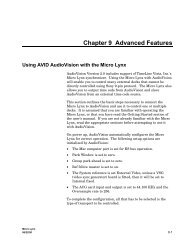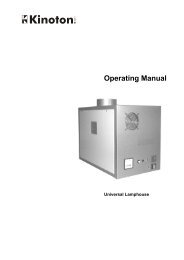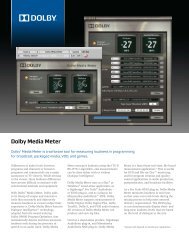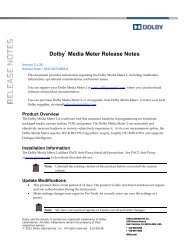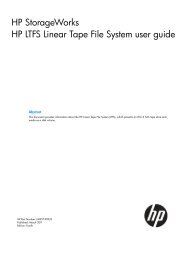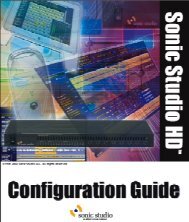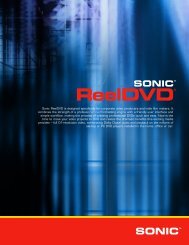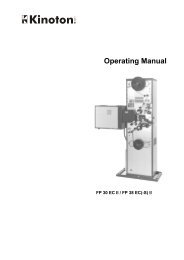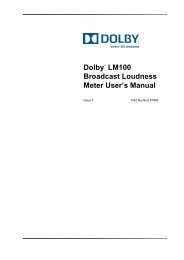Cable Reference Guide - Audio Intervisual Design, Inc.
Cable Reference Guide - Audio Intervisual Design, Inc.
Cable Reference Guide - Audio Intervisual Design, Inc.
- No tags were found...
You also want an ePaper? Increase the reach of your titles
YUMPU automatically turns print PDFs into web optimized ePapers that Google loves.
AppendixThe TimeLine Micro Lynx and Lynx System Supervisor Unit cantake SMPTE from a master tape and generate MTC. Thanks tothis, the film/TV composer can now use a cue-sheet style program,as well as conventional music, and if desired, deal exclusively inthe realm of hours, minutes, seconds, and frames.Although SMPTE and MTC are not the same thing, they make apowerful combination when the Micro Lynx or System Supervisorputs them together.Using SMPTEThings To Know About Generating Time CodeAny SMPTE time code application involves three basic functions.First you need a generator to produce the actual SMPTE signalthat goes onto tape. Second, you need a reader to read the SMPTEtime code from tape. Finally, there’s the job itself − what youwant to accomplish.SMPTE can be used with a resolver, to ensure that a single tapemachine runs at a consistent speed. It can also be used with anautolocator that stores a number of SMPTE addresses in memoryand chases to those addresses on command, or when you want tolock one or more devices to a master tape machine with asynchronizer.In the early days, a different device was quite often required toperform each of these functions. Today, TimeLine has severalproducts that perform them all: the Lynx Time Code Module witha Keyboard Control Unit, compact, high-end, high performanceunits; and the Micro Lynx, a high performance project or smallerstudio system.Time code, generated and striped on tape, must ultimately beplayed back and read, so you must determine the optimum levelfor your master tape before generating the time code. Mastertapes are generally printed at about -6 dB. If you print code at toolow a level, the reader will have trouble reading it, but if you printit too hot, it will bleed audibly onto adjacent tracks. For thisreason, many engineers leave a guard band − a blank track next tothe time code track − even when printing at the correct level. Toremove the need for leaving two blank tracks (one track on eitherside), time code is usually printed on the outermost track inmultitrack formats (i.e., track 24 on a multitrack machine).Micro LynxA-14 06/22/00




